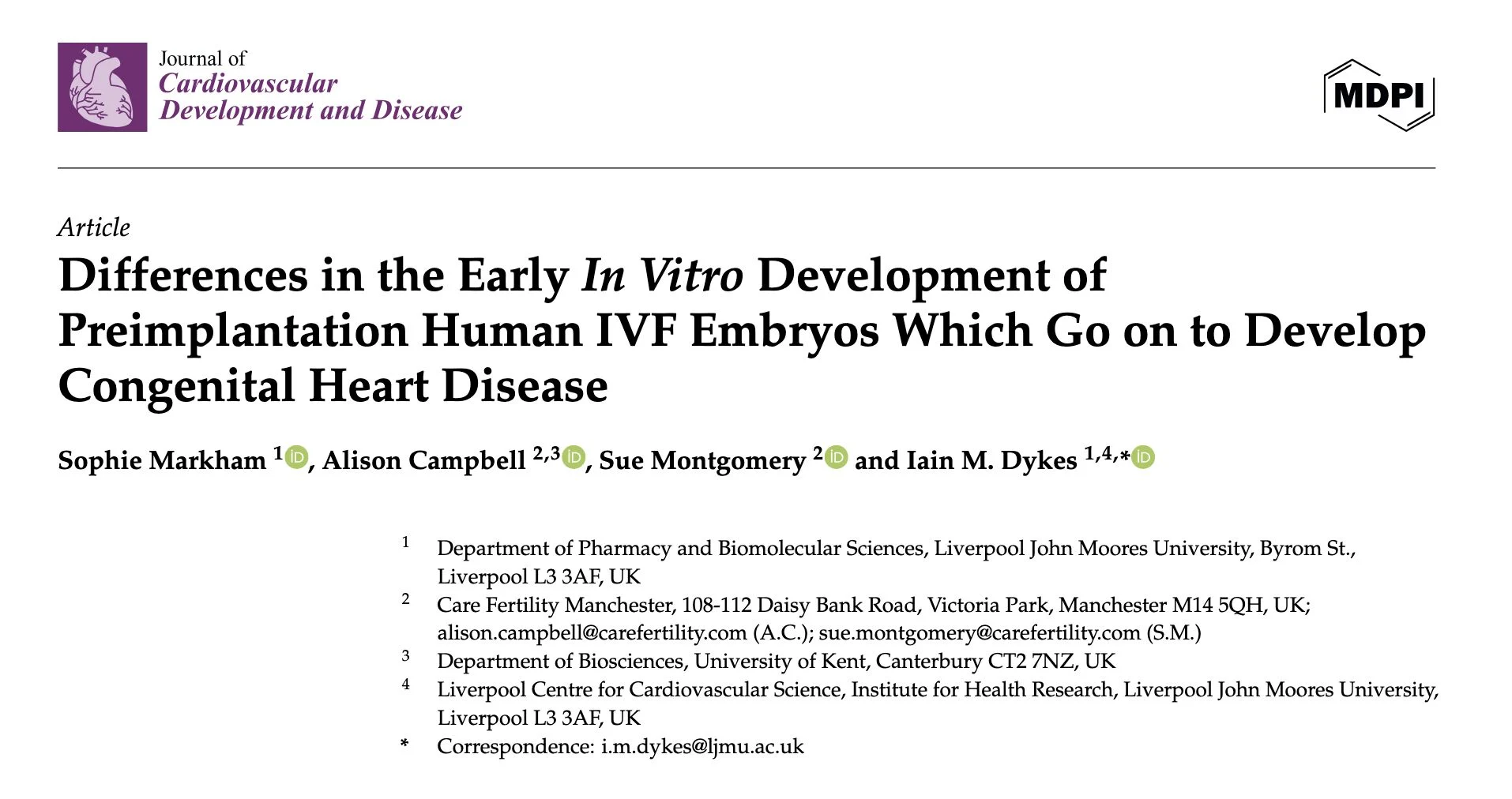
AI and Time-Lapse Imaging to Improve IVF Success – MovaLife Microrobotics
MovaLife Microrobotics shared a post by Eric Lameignere, Co-Founder of MovaLife Microrobotics, on LinkedIn:
“This article perfectly illustrates our vision at MovaLife Microrobotics: leveraging artificial intelligence and time-lapse imaging to identify novel biomarkers, enhance the work of embryologists, and improve treatment success rates for patients – precisely what our teams dedicate themselves to day in and day out.”
Quoting Eric Lameignere’s post:
“Early Embryonic Morphokinetics and Congenital Heart Disease: Insights from Time-Lapse Imaging
With the advent of time-lapse incubators, the precise and reliable assessment of the various stages of early embryonic development has become more accessible. An expanding body of literature is now exploring the relationship between these morphokinetic parameters, embryo quality, and live birth rates.
More originally, a large retrospective study led notably by Professor Alison Campbell analysed anonymised data from seven Care Fertility clinics in the United Kingdom and Ireland, in order to investigate the association between preimplantation embryonic development and the occurrence of congenital heart diseases (CHD) in children conceived through fertility treatments, including IVF and ICSI.
- Data from a total of 18,799 patients were included, and 96 CHD cases were identified, of which 32 were selected for an in-depth analysis of morphokinetic data and the precise timing of embryonic cleavage events.
- CHDs were classified into three groups — complex (severe, often cyanotic), mild (acyanotic, generally benign), and isolated cardiac murmurs — and compared to both matched and unmatched control groups (n = 352).
Key findings:
- Mild CHDs were associated with a significant delay in the early cleavage stages (pronuclear fading, transition to the 2- and 4-cell stages) and with increased synchronicity during the third division (4 → 8 cells), suggesting that the very first cleavage events may influence cardiac morphogenesis.
- Complex CHDs exhibited a prolonged blastulation phase, sometimes associated with abnormalities in the embryonic left–right axis, such as heterotaxy. Although establishment of the left–right axis occurs after the developmental window under study, these observations indicate that alterations as early as the blastula stage could affect mesoderm specification and, consequently, cardiac development.
The authors propose that morphokinetic analysis of embryos may hold potential for the early diagnosis of CHDs, while acknowledging that the limited sample size and clinical variability require confirmation in larger studies. Like MovaLife microrobotics, they further note that the integration of artificial intelligence in time-lapse image analysis could enhance diagnostic accuracy and pave the way for early screening of congenital heart diseases in fertility clinics.
Read the full article here.”
Title: Differences in the Early In Vitro Development of Preimplantation Human IVF Embryos Which Go on to Develop Congenital Heart Disease
Authors: Sophie Markham, Alison Campbell, Sue Montgomery and Iain M. Dykes

-
Oct 11, 2025, 06:44The Global IVF Market Is Set to Reach $65B by 2032 – Meddilink
-
Nov 6, 2025, 12:13Marco Zaccaria: Next LejEndo Dives Into ICG Innovation in Surgery
-
Nov 6, 2025, 12:04Silvia Alvarez: Do Endometriosis or Adenomyosis Affect Oocyte Quality and Pregnancy Rates?
-
Nov 6, 2025, 11:59Mary Mulcahey: Culture Eats Strategy and Grit Fuels Growth
-
Nov 6, 2025, 11:46Connection Between Infertility Treatments and Stroke Risk – Reproduction and Fertility
-
Nov 6, 2025, 00:03Fertility and Sterility: Special Issue Explores Human Embryo Testing and Phased Validation
-
Nov 5, 2025, 23:51William Wallace: How Your Gut Microbes Help Set Your Body’s Internal Clock
-
Nov 5, 2025, 13:34Nibhash Kumar: When Embryos Stop Growing and the Hidden Reasons Behind Early Developmental Arrest
-
Nov 5, 2025, 13:29Ahsan Saeed: DNA From Three Parents Just Stopped a Life-Threatening Disorder Before Birth!
-
Nov 5, 2025, 13:24New Weighted Classification Criteria Refine Antiphospholipid Syndrome Research – Hæmatologi DK
